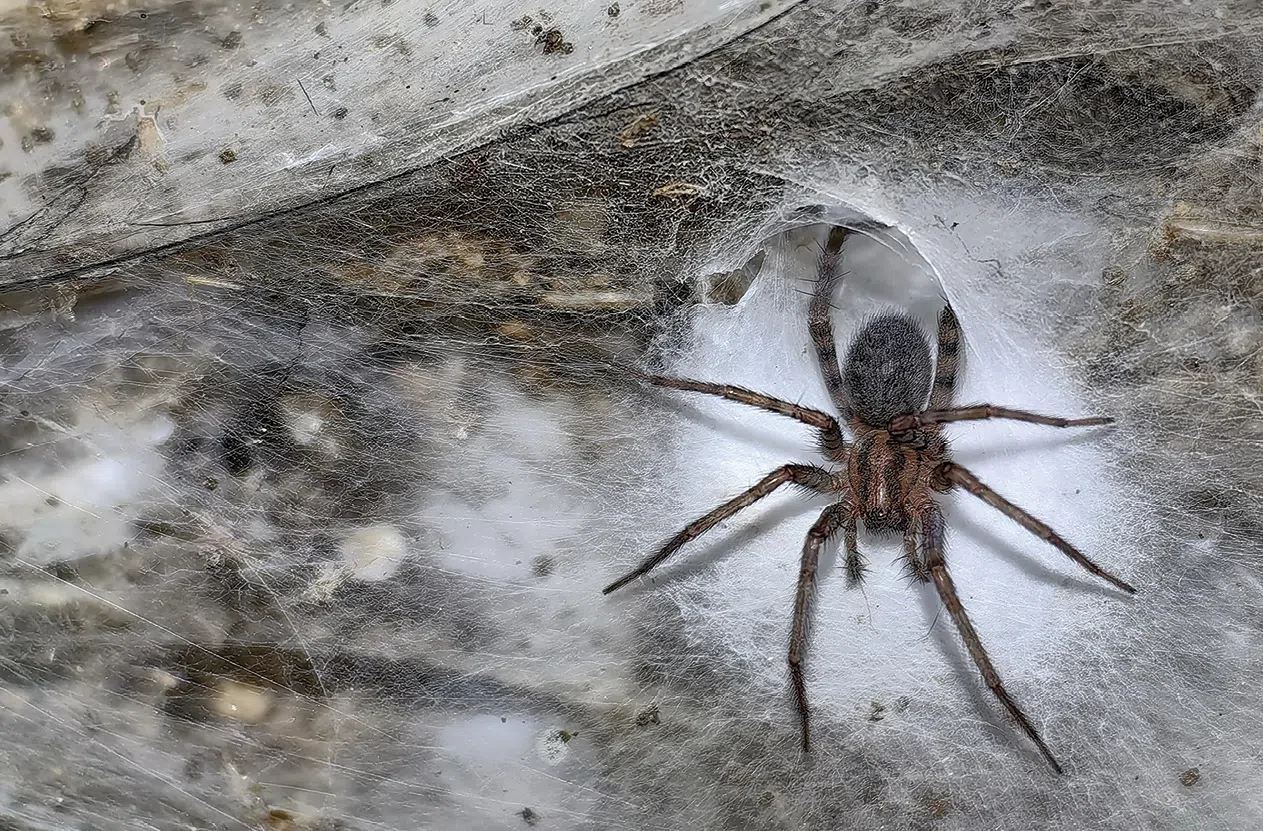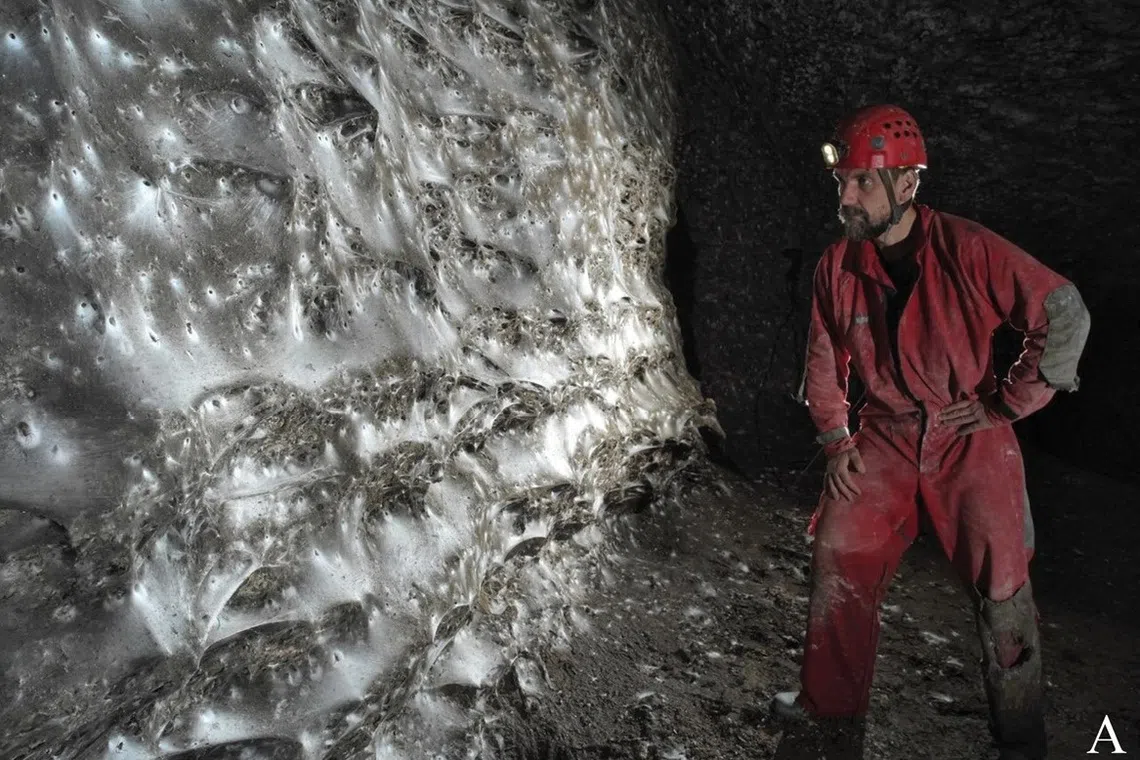TIRANA – Even in a pitch-black cave, what appears to be the world’s largest spiderweb is hard to miss.
It stretches for 1,140 sq ft, about the size of a small home, hanging in a low and narrow passage in a cave spanning the border between Albania and Greece.
But what scientists recently found in Sulphur Cave, a network of rooms and passages carved from limestone by the Sarantaporos River, surprised them even more than the size of the web.
Inside the spider metropolis – population 111,000 – were two species that had not been known to live together harmoniously, mainly because one species tends to eat the other.
The team of scientists discovered that 69,000 Tegenaria domestica, known as the barn funnel weaver, were living with about 42,000 Prinerigone vagans, which inhabit wet places.
Usually, the barn funnel weavers prey on P. vagans, which are smaller.
“But in the cave, because it’s dark in there, our hypothesis was that they do not see each other,” Dr Blerina Vrenozi, a biologist, zoologist and ecologist at the University of Tirana in Albania said in an interview. “So they do not attack.”
Dr Vrenozi is one of the scientists who published their findings on the Sulphur Cave in the peer-reviewed journal Subterranean Biology in October.
“I’ve been working for 18 years with spiders, and I’ve never seen such a community,” she said.
Dr Vrenozi said it was “not so easy” to reach the cave, wearing a wet suit and boots, and clinging to ropes while wading across the river through chest-high water. But she added that it was “pure adrenaline for biologists”.
When she shone a light into the cave, it appeared to be sparkling, she said. The wider web is actually a pastiche of thousands of individual funnel-shaped webs, she said, and these were “really bright with the light because of the dance of the silk on it, so you could see this surface with a lot of dots, like lights in the gigantic web”.
The cave itself was hollowed out by sulphuric acid formed from the oxidation of hydrogen sulphide in the groundwater.
The Czech Speleological Society discovered the cavern in 2022 and reported it. Then the team of researchers that published the study in October visited the cave several times between 2023 and 2025.
The cave stays about 26 deg C year-round. The vast spider population is attributed to an abundant food supply: more than 2.4 million midges in the cave, ready to be entangled in the intricate web.
The environment, too, is unusually protected. The cave is hard to reach and is filled with foul-smelling hydrogen sulphide gas, in concentrations too great for most animals to live there.
“All you could smell was sulphur hydrogen, and you cannot breathe,” Dr Vrenozi said, recalling that most of the researchers were wearing masks. But as they descended deeper into the cave, she said that “you get used to the smell of spoiled eggs”.

A Tegenaria domestica spider. Some 69,000 of that species were living with about 42,000 Prinerigone vagans in a huge web in Sulphur Cave.
PHOTO: SUBTERRANEAN BIOLOGY
Dr Vrenozi and her colleagues are not sure how long the spider metropolis has existed, but she said that its remoteness meant it could continue indefinitely.
“There are several layers of the web, and part of it can fall down because it’s too heavy to stay attached to the wall,” she said. “But this is a cycle which is repeated time after time.”
The cooperation between the two species of spider will continue to be studied, Dr Vrenozi said, “because neither of these species is a social species; they’re solitary species”.
Professor Dinesh Rao, a spider biologist at the University of Veracruz in Mexico, who was not involved in the study, said the estimated number of spiders was very large. The methodology appeared to be sound, he said, but he added that the researchers may have overestimated the overall size of the web because they included older, unused spiderwebs. (The study itself acknowledged this.)
The study also showed that the spiders inside the cave had genetic differences from their relatives outside, suggesting that the residents of the spider metropolis had adapted to their environment to build a singular community.
When Dr Vrenozi reached out to touch the web with her hand, she found that it was really soft and bounced back. It was, she said, “very spongy”. NYTIMES
GreeceAlbaniaBiodiversityScience

